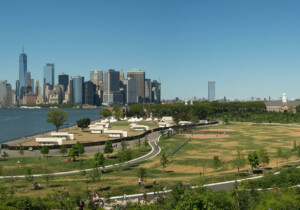In April 2002, when the architect Michael Sorkin and I gathered a group of distinguished left-of-center urban scholars and published a book titled After the World Trade Center: Rethinking New York City, critics in the local architectural and urban design community scoffed that it was “too soon” to take account. (Editors at The New York Times had a different opinion, naming it one of the best architecture and design books of that year.) Twenty years after 9/11, the war that the U.S. unleashed in response to the attack and the tragic loss of 3,000 lives is drawing to a close, and another governor who wanted to build Manhattan offices and control the city has gone, but the question we raised remains: How can we rethink New York?
Unlike the dominant discourse in which “heroes” abounded and the gaping wound at Ground Zero became a monument to American liberty, we did not assume the U.S. to be innocent. We presented democracy as an ongoing fight for social justice rather than a fait accompli. And nowhere was this clearer, we showed, than in Lower Manhattan, a historic site of contestation between the forces of power—Dutch colonists, Wall Street banks, real estate developers—and the communities that they successively displaced to build their city, from the Munsee Lenape and early residents of African origin to the wholesale vegetable vendors of Washington Market, the Lebanese Christian restaurant owners of Little Syria, and the electronics sellers of Radio Row. We felt like Susan Sontag, whose short New Yorker essay about 9/11 drew a venomous response after she wrote: “Let’s…grieve together. But let’s not be stupid together.”
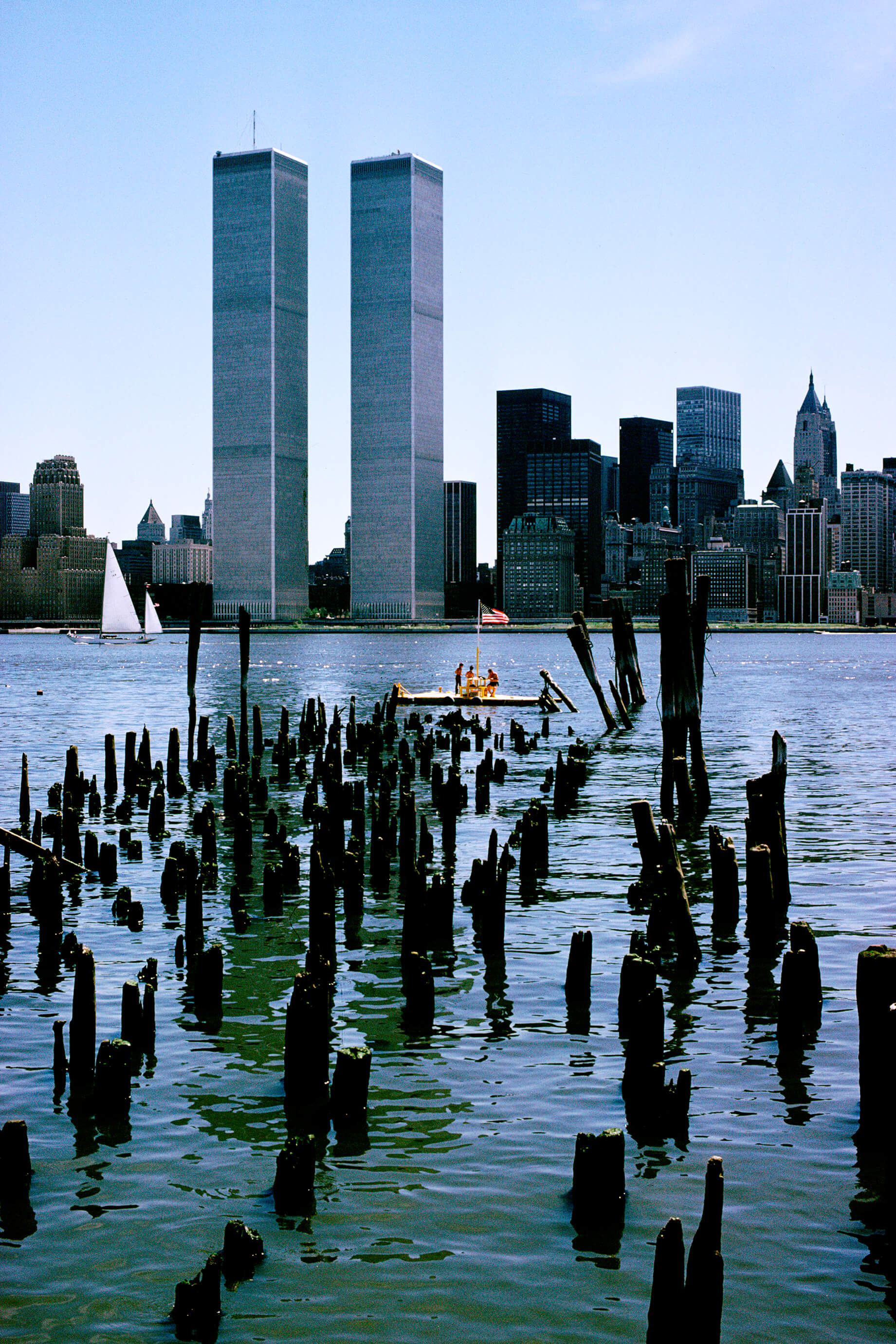
Not being stupid meant calling out the required performance of patriotism that stuck American flag pins in every politician’s lapel and plastered decals of the same flag on all New York City subway cars—symbols you still see today in the official portraits of President Biden and Vice President Harris and throughout the Metropolitan Transportation Authority’s mobile domain. It meant questioning the logic of rebuilding the World Trade Center (WTC) the way it was before 9/11—despite a citywide oversupply of chronically unrentable office space, a continual flow of subsidies to rich corporations like Goldman Sachs because they threaten to move to Jersey City, and the sanctimonious hubris of imposing ever-taller skyscrapers on “sacred ground.”
We also sketched elements of both a rebuilding plan for Lower Manhattan and a comprehensive plan for New York. Begin by rethinking the global hegemony of financial capital and the city’s role—especially Lower Manhattan’s role—as its enabler. Place a berm at Ground Zero by filling the crater with earth from every country, creating, as Michael wrote, “an Elysian Field in perpetual memory of the fallen.” Transform public authorities like the Port Authority of New York and New Jersey (owner of the World Trade Center site), the Lower Manhattan Development Corporation (appointed by then governor George Pataki to make all decisions and coordinate funding for both the WTC and the surrounding area), and the New York City Economic Development Corporation from autonomous organizations insulated from public scrutiny and control into transparent governmental agencies that would integrate meaningful public participation into all development projects. Build a regional public transportation network that would prioritize accessibility to decentralized business hubs throughout the city and suburbs. Support local manufacturing for jobs and sustainability. These goals became even more relevant after the 2008 financial crisis and then the COVID-19 pandemic.
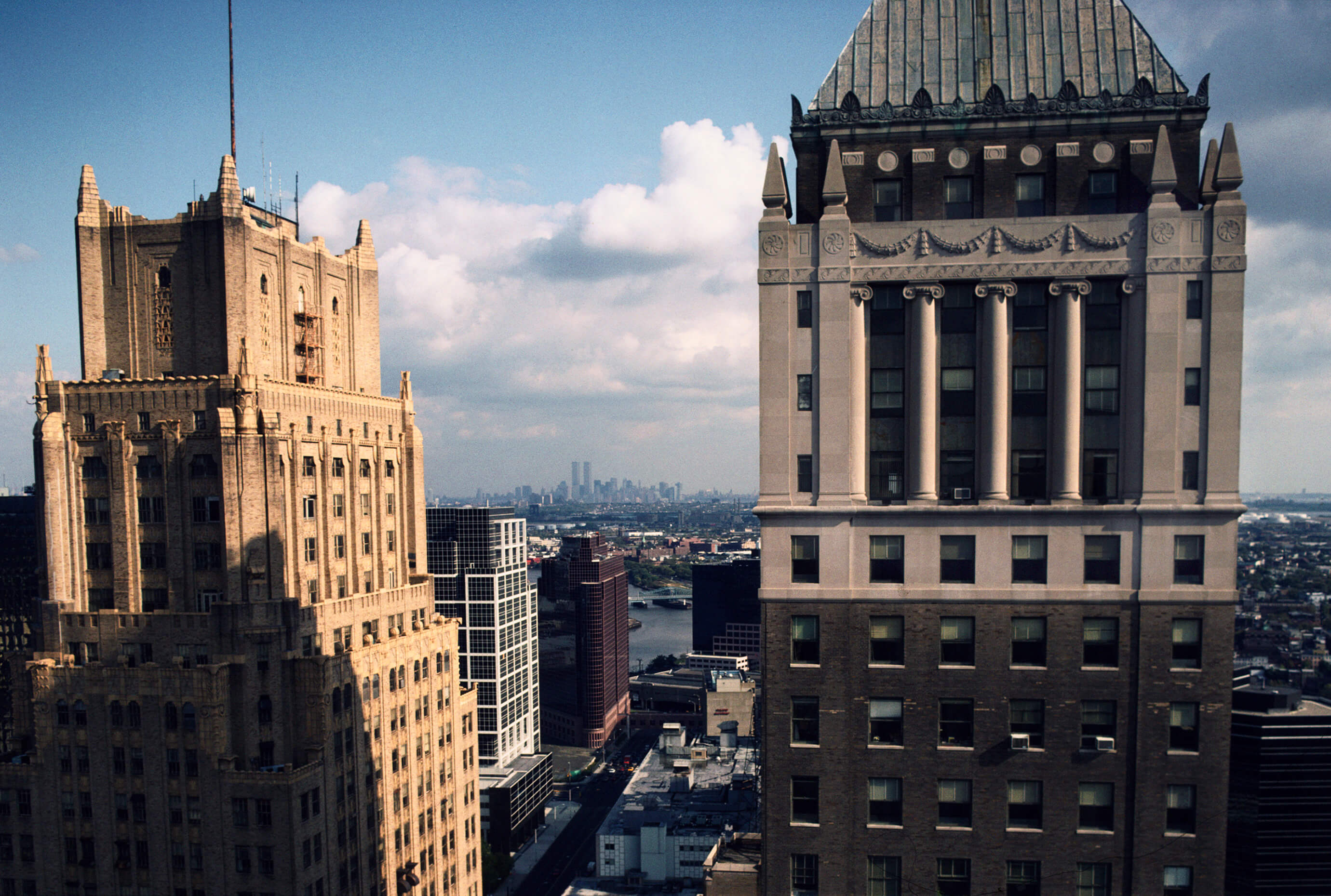
Truth be told, though, we wrote those words as New York teetered on the edge of a dangerous precipice. The terrorist attacks on 9/11 ushered in an economic recession whose regional losses in employment and real estate deepened the effects of a dot-com crash that had already emptied office buildings along “Silicon Alley,” from 23rd Street down to Wall Street. Politically and culturally, the Giuliani era of tough talk and even tougher policing, catering to the white population of the Upper East Side and the outer boroughs, appeared to have damaged any hope for civility. No one yet realized that the worst ravages of the crack epidemic and the pervasive street crime it had encouraged were receding, although whether this was due to more efficient policing or incarceration of the innocent along with the guilty as long as they were Black was not widely discussed. New York’s future looked hopeless.
Gradually, the city recovered its luster. Mayor Michael Bloomberg exerted a calming influence. He made New York seem rational in a way that appealed to business leaders who respected his billionaire fortune. His administration supported historic preservation and the expansion of green space and cultural amenities, issuing plans that could appear progressive because they spoke to both environmental and spiritual needs. New Yorkers who loved the city did not object to more trees, fewer cars, and funding for the arts even if much of it came from Bloomberg’s own pockets.
In 2009, after the global financial crash caused by the big banks’ rush to sell rotten securities on just about everything, the Bloomberg administration introduced, for the first time ever in New York, an economic development strategy. Luckily, in contrast to earlier official neglect, it supported digital technology and media production, helping to build facilities from Steiner Studios in the Brooklyn Navy Yard to Cornell Tech on Roosevelt Island and subsidized workspace for start-ups even though this created an “innovation complex” with claims of its own.
But, from 2002 to 2014, during the three terms of his mayoralty—with Bloomberg pushing that third term through the city council despite a two-term limit already decided on by the city’s voters—the greener and more peaceful city also became a horrifically expensive one. Neighborhoods were torn apart by almost 200 zoning changes that opened them to developers of market-rate or “luxury” housing. Manufacturing was restricted to ever-smaller districts and even banished from the Garment District in Midtown Manhattan to the Bush and Brooklyn Army Terminals. Rezoning that was initially connected to an aborted bid for the 2012 Olympics laid the groundwork for the expansion of the corporate city to the Lower West Side (Hudson Square), the Far West Side (Hudson Yards), Downtown Brooklyn, and Long Island City. The WTC site itself became a flagship location for tech and media companies (Condé Nast, Spotify) and privately funded tentpole attractions (the National September 11 Memorial & Museum, the Perelman Performing Arts Center).
In Bloomberg’s indelible formulation, there was no shame in positioning the city as a “luxury product.” “New York offers tremendous value, but only for those companies able to capitalize on it,” he said. For residents who were pushed out of their low-rent apartments, though, or even those who sold their homes at great profit but could not afford to remain nearby, the city had lost its soul.
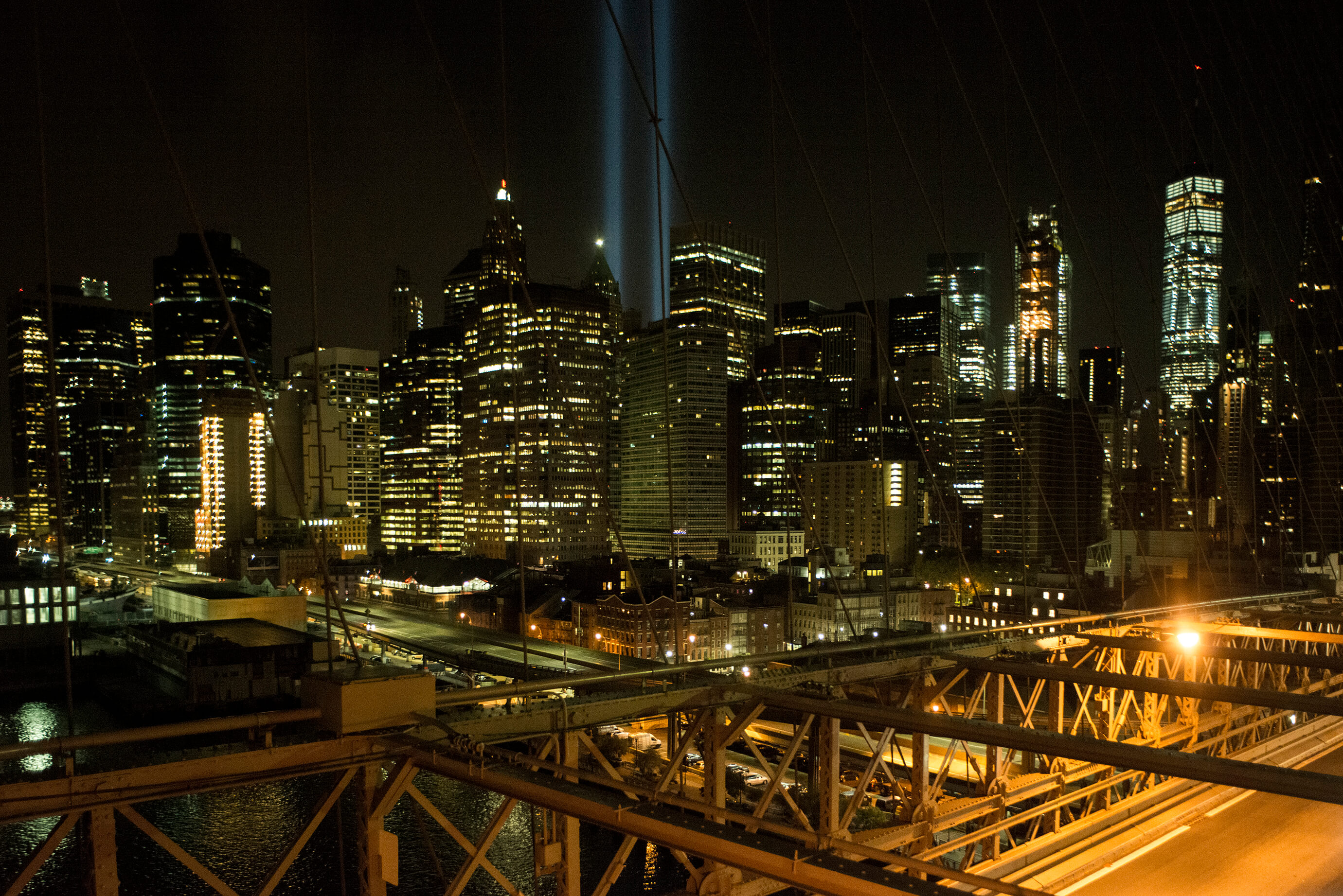
Like Bloomberg, his successor, Bill de Blasio, changed the mayoral tone. He campaigned in 2013 by pledging to fight against the “tale of two cities” where the rich lived so much better than the poor. Four years later, he vowed to create “good jobs for all.” He achieved notable successes, with the rapid expansion of pre-K classes and universal free lunch in the public schools, holding the Rent Guidelines Board to zero and then low increases on rent-stabilized apartments, and providing free legal aid to low-income renters facing eviction. His administration expanded the supply of rent-regulated apartments.
But there is still not enough housing, and it is still too expensive for many “native” New Yorkers. No mayor can close the gap between stagnant wages and rising rents. Yet de Blasio continues Bloomberg’s strategy of steamrollering zoning changes through angry neighborhoods, striking a devil’s bargain with real estate developers for Mandatory Inclusionary Housing that creates at least seven new apartments at “luxury” rents for every three that are rent regulated.
Even worse, there seems to be little method behind his policies. There’s no comprehensive plan for homelessness or renovating public housing. The city planning department pays little attention to communities’ demands. The economic development corporation does not submit to public scrutiny and even less to public control. As the massive but ultimately rejected subsidies to Amazon showed, the city’s and state’s political leadership is still in thrall to corporate blackmail. It has no alternative to Big Tech.
Neither does the city have a plan to deal with climate change or aging infrastructure. Instead of rethinking the Brooklyn-Queens Expressway, elected officials dither and delay. The financial expense of needed change would be enormous, but more damning still, there is no vision. Few architects or planners offer ideas to counter the self-promotion of their public and private patrons. Continued real estate development on the waterfront leads to the ultimate irony of building a Little Island in the Hudson River, a Vessel at Hudson Yards, and an environmental research center, buttressed by hotels, stores, and offices, on Governors Island.
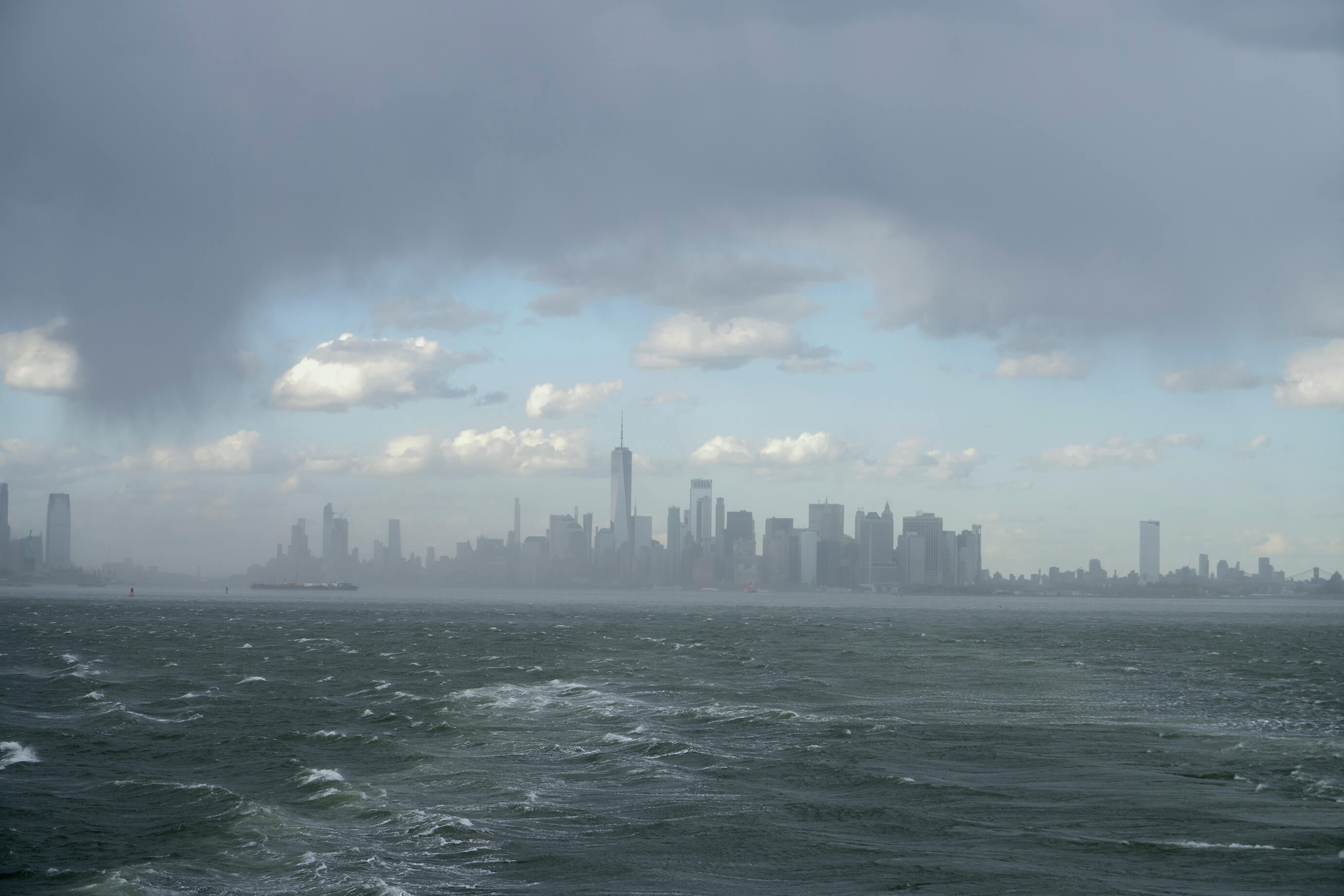
The COVID-19 pandemic exposed not only the city’s vulnerability but its dependence on a fragile web of vulnerable workers, public health services, and social welfare agencies. It also revealed the dysfunction of ceding large parts of the city to the globally mobile rich, tourists, and companies whose offices have shifted to work-from-home. The as-yet-unbuilt 5 World Trade Center is slated for residential rather than office use, yet structurally, little has changed since 2001.
Gladiatorial conflict between the mayor and governor is still conditioned by “home rule,” the city’s legal vassalage to the state as defined by the state’s constitution, if not also by the two officials’ egos. Real public input in development plans is still rejected. Subsidies are handed out to companies for bogus relocations without enforcing the promised job creation. The city’s deep economic losses during the pandemic—half a million jobs, a 20 percent vacancy rate in the central business districts of Manhattan—challenge its reliance on a wobbling base of property taxes and a small number of very rich people who pay a significant share of aggregate personal income taxes.
In the last chapter of After the World Trade Center, the historian Mike Wallace called for a “New York New Deal.” He envisioned not only federal government funding for public-sector jobs but also more support for local manufacturing and an end to city tax breaks for corporations. Twenty years later, now is the time.
Sharon Zukin is professor emerita of sociology and of earth and environmental sciences at Brooklyn College and the CUNY Graduate Center, and the author of Naked City: The Death and Life of Authentic Urban Places and The Innovation Complex: Cities, Tech, and the New Economy.
AN uses affiliate links. If you purchase something through these links, AN may receive a commission.









